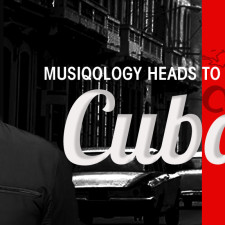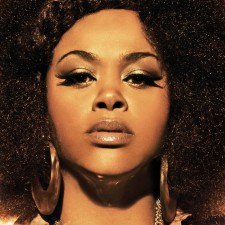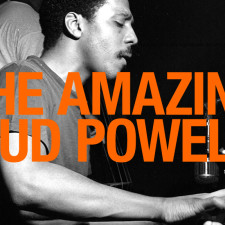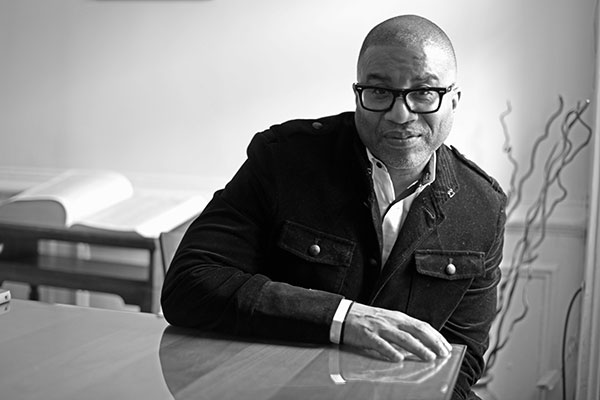It’s instructive to look back sometimes and try to understand the who, what, when, where, and how that got you here—and more interesting still to consider the “what is keeping me wherever here is.” I think about it a lot. On planet musicology there are many divisions available to anyone invested in them. In my
own intellectual and musical terrain there are several: the dichotomy of musician/scholar; the division between formal scholarly methodology and the idea of “living” with/in the music; the economies of prestige among blogging, print journalism, and scholarship; identity politics in insider/outsider debates; and the gaps between local knowledge and larger communal issues in African American expressive practice.
Here’s a little of my take on some of these matters, couched in some of the experiences
I’ve had navigating the sometimes tricky waters of finding “voice” in a field notoriously void of diversity and benevolence for intellectual abstraction. Yet my search for “real music,” which was, of course, the “scene of the crime” as it were, continues unabated.
To be musically bi-cultural—certainly an “old school” characterization—was simply how one mused in the old neighborhood. Although I grew up in a primarily segregated community (the only whites I remember seeing regularly before high school were the teaching staff at elementary school, the insurance man who collected payments door-to-door, my violin teacher, and schoolmates from a nearby, all-white mobile home neighborhood), the accepted standard among musicians was to read music and to play by ear. It was a rich sonic world saturated with diversity: blues songs (“I’d Rather Drink Muddy Water”); anthems (“Lift Up Your Heads All Ye Gates”); soul-jazz (“In Crowd”); early
R&B (“Let the Good Times Roll”); rock (“I Can’t Get No Satisfaction”), and much more. Female musicians were everywhere, and their leadership, gifts, and expertise were respected. Elders encouraged young performers to learn the traditions but also to extend them through creativity and experimentation. Dancers were prized and praised.
One of the things I’ve insisted on throughout my journey in musicology is to remain connected to this vibrant system of music making and culture sharing. I’m reluctant to call these numerous experiences “field work” because card-carrying ethnomusicologists maintain that this describes a specific methodological approach to living with music. I joke to myself it must be “yard work” then. It also bemuses me to read laments about how African American communities on both sides of the sacred/secular “divide” have lost their aesthetic way. How they, for example, have forsaken jazz for less “serious” music or how they disdain traditional spirituals for the rock, funk, rumble, and stomp of contemporary gospel. I insist that this is not the case: just visit a good, hot Pentecostal church service with a top-notch music staff and you’ll get all the jazz one needs. You have to look for such things beyond a marketing category called “jazz.”
At the same time that I encountered these narratives of “cultural loss” during my years of graduate study, I continued to hold posts in black Pentecostal and Baptist churches. There, older traditions were, in fact, in tact and existed cheek-to-jowl with more experimental contemporary sounds; these juxtapositions were not just tolerated but
encouraged in most spaces. Among ourselves, in fact, we endearingly called—Ypsilanti, Michigan—a town adjacent to Ann Arbor and where I held a church post—“Ypsi-tucky” because of the “down home” ethos of its black community. When I moved to Boston to teach at Tufts University, I found the same. The students from Berkelee College of Music frequented jam sessions at a club on the South End named Wally’s; and I played for a small and highly, spirited Baptist church that had a “give us the funk,” unpretentious, earthy, and sanctified way about itself. These sonic communities kept me in touch with my South Side roots and outlook.
In 1998 when I began teaching at the University of Pennsylvania in the city where the descendants of DuBois’ “Philadelphia Negroes” were holding it down in their own “souls of black folk” ways. Coming to town as a musicologist to work in a highly regarded department could have been an excuse to sever my ties to these communities. Fortunately for me, black Philadelphia was a place that rivaled Chicago in its demographic and cultural composition, and even as a site of “ethno-ghetto-graphic” meditation. I found this community to be dynamic, historic, and rich with tradition. Shortly after arriving I was taken to Natalie’s Showcase Lounge, a modest
establishment resting on the western edge of Penn’s urban campus. Inside the long and narrow nightclub, I found yet another community theater, one that took pride in continuing Philly’s hard bop, gospel-tinged jazz scene, complete with an informed, let the good times roll listening audience that took pride in standing as guardians of their deeply rooted traditions.
Literary and music scholars Gerald Early and Farah Griffin—both natives to the city—have discussed this Philadelphia audience’s sense of its cultural profile and history. One couldn’t find a better place from which to contemplate post-WWII black music: the bully pulpit of Penn’s historic music department with its progressive twin traditions of scholarship and composition, an institution situated in one of the most vibrant centers of jazz, gospel, R&B, neo-soul, and hip-hop. It was the best of both worlds. I circulated around the scene, learning its rhythm, rhyme, and ropes mostly accompanying jazz singers whose repertoire spanned jazz standards, blues, and R&B. Many of them would burst into a black social couples dance called “the bop” on stage, mid-song, with any willing audience member who’d catch the groove with them. One of the more idiosyncratic things I learned, one seemingly specific to Philly’s jazz set, was that, for some reason, all the female singers’ repertoire included Etta James’ classic R&B ballad from 1961, “At Last,” a song with a tricky modulation in the bridge section. The crowds always expressed their appreciation vocally in the time-honored, in real time critical response expected in live blues cultures.
My new adopted home holds as much potential for sound exploration. Recently, while walking through the Bedford-Stuyvesant neighborhood of Brooklyn, New York (birthplace of pianist Randy Weston and rappers Jay-Z, Biggie Smalls, and Little Kim, among others) on a warm Sunday afternoon, I was struck by the mosaic of musical styles that I encountered. On block after block, the airwaves were shot through with the Holy sounds of storefronts and cathedrals that sonically testified to Christianity’s meeting, negotiating and rejoining and re-negotiating its contact with and use within contemporary black Diaspora communities.
The “musicking” typically lasts all day long, ebbing only to fuel on the most available local sustenance: Chinese fried rice, fried chicken, pizza slices, and sugary beverages. Dressed in their Sunday best, the residents reify their belief and relief in loud music
with shimmering tambourines, Hammond B-3 organs, raised voices, and huge speaker systems. Warm holidays figure more abundantly in public, nonstop music, from dusk to well into the wee hours of the morning, as the pounding bass lines from a wide range of Diaspora grooves frame the celebrations, shake the windowpanes, and set off finicky car alarms. (I don’t want to sound too romanticizing here. Sometimes you want to go the you-know-what to sleep).
In conjunction with my canonizing and classicizing of jazz studies within the academic industrial complex, this “community participant-observation work” allowed me to witness first-hand how the music’s grass roots connections were kept sturdy and connected to vigorous and specific cultural resources.
Paradoxically, at the university, I participated in another kind of ongoing institutionalization as I wrote and developed courses in the history of jazz, American music, and popular music of all kinds in an Ivy League setting in which one is expected to push a respective field in new (and decidedly abstract) directions. Engaging graduate students embarking on their journeys into the demands of formal music contemplation—energies, fears, and enthusiasms palpable—have been particularly inspiring. It was in these stimulating, but often incongruent, settings that I achieved tenure and shortly thereafter celebrated my hard won academic freedom by going the counter intuitive route: by starting my own band, Dr. Guy’s MusiQology.
Forming a group that performed original compositions, starting a blog, working with Philadelphia school teachers, work shopping with children, and mixing live music making into my public lectures represents an example of what I’ve been calling “public musicology.” An obvious riff on the term public intellectual, this brand of musicology, for me, describes a concern and involvement with directing one’s scholarly and musical activities to audiences beyond the academy. This attitude doesn’t make me unique. I’ve noticed that many black music scholars who work on music from within the “Afrological” tradition maintain active performance lives even as they continue their professional activities in research and analysis. A cursory listing would include: George Lewis, Tammy Kernodle, Salim
Washington, Kyra Gaunt, Emmett Price, Horace Maxille, Melvin Butler, Leonard Brown, Portia Maultsby, and Mellonee Burnim, to name but a few.
My colleague Carolyn Abbate, an eminent scholar of opera and other topics, has written eloquently about the difference in considering, on the one hand, the idea of an abstract musical “work,” and on the other, the idea of music’s materiality in actual performance or, “real music.” In a powerful article, Abbate provocatively wonders if she, as a performer/scholar, is able to consider abstract questions about musical signification and formal structure while in the act of performance or deep listening. Distinguishing between these two modes of musical engagement—drastic and Gnostic—Abbate describes the first as knowledge derived from action “and not from verbally mediated reasoning,” the latter being “knowledge based on semiosis and disclosed secrets, reserved for the elite and hidden from others. Abbate argues that Gnostic, loquacious, musicological rumination is “almost impossible and generally uninteresting as long as real music is present—while one is caught up in its temporal wake and its physical demands or effects.”
For me, the combined acts of performing music in real time and writing about music’s signifying affect has allowed my toggling back and forth between drastic and Gnostic modes of musical perception. The primary value in this has not been a blind belief in my own interpretations over those of other scholars or even an exalted sense of my own authority or authenticity. Rather, it has deepened my respect for the mysticism of the musical experience, of its ineffability, flexibility, and imprecision. It’s the slippery nature of the enterprise that draws me in. As Abbate argues: “musical sounds are very bad at contradicting or resisting what is ascribed to them. . . they shed associations and hence connotations so very easily, and absorb them, too.” True that. They undermine our authority every time. I was stumped when following a public lecture in which I had expounded on the “cultural politics” of a musical genre or some such matter, someone asked from the audience what my own music “meant.” At a loss, I stumbled around to gather some kind of response. That lesson affirmed for me why I return time after time to musical performances and attempt explanations. I guess, I’ll never really know “the” truth. Sweet surrender.
Tags: Bed-Stuy, Carolyn Abbate, Chicago, Farah Griffin, Gerald Early, Guthrie Ramsey, Philadelphia, public musicology












 Share On Facebook
Share On Facebook Tweet It
Tweet It







![[VIDEO] Black Music and the Aesthetics of Protest](http://musiqology.com/blog/wp-content/uploads/2015/03/onlynchings1-225x225.jpg)



